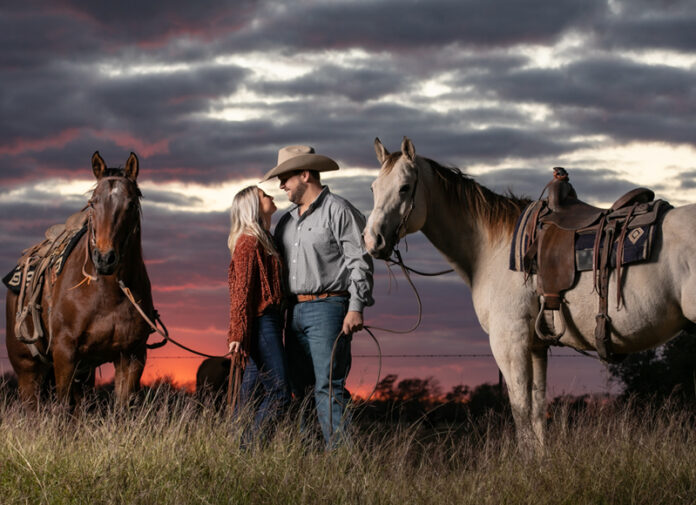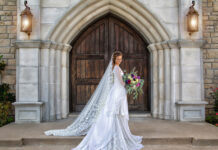By Alison Carlino
Light influences human mood, aesthetics of a room, and underlying themes of movies & television. If I’ve learned one thing in 19 years of being a professional photographer, it’s that I had better have a plan backed up with solid skills that allows me to go into any place and conquer the light. I rely on my understanding of the light’s QQCD (quality, quantity, color, & direction) the instant I enter a space, almost instinctively now. I’ll catch myself judging a location that I am not even photographing and then forming an opinion about how wonderful or how challenging it would be to work there. I even have trouble watching a film without reading the light patterns and feeling envious of Hollywood budgets. I am ruined; plain and simple. Light seeker; light lover.
I don’t discriminate either. I’ll take your ambient or your artificial and judge it. What’s ironic is that for the first 3 years of my career, I was terrified of flash. I didn’t understand what controlling the light could do for my images or that lighting done so well can often go unnoticed. I eventually grew tired of overexposed skies and having no knowledge as to how to light the person and keep the sunset as seen. That was the tipping point to move from an ambient light photographer to one that was serious about exposure, flash positions, power levels, and modifiers. My bold color and dramatic lighting style took several years to surface but now, it’s one of the reasons people book me. You can be proactive and plan your shot list all you want but walking into a space that is not what you had hoped for is reality and requires a more reactive skill set.
How do I settle my mind upon arrival? Immediately diagnose the QQCD of the existing light and decide how to use or change it to match the final vision. I often imagine the final pose and mood of the image and then work backwards to construct the light.
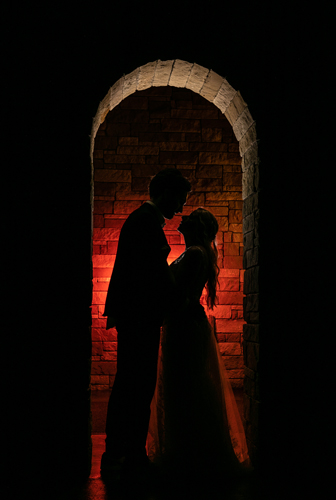 First, the quality—is the ambient light harsh or soft? Could someone open their eyes fully or would he/she squint? An example of harsh would be a sunny day, open field, no shade between 10am-2pm. It could also be a stage or theater light source acting as a spotlight. Poses that work well here are typically not smile at the camera traditional ones; think fashion or sports and action. If you’re stuck shooting at that time, pose to match the light and consider packing in heavy flash power to control the patterns and shadows of the light. Light done so well in situations like this might actually look like sunlight if coming from the direction of the sun.
First, the quality—is the ambient light harsh or soft? Could someone open their eyes fully or would he/she squint? An example of harsh would be a sunny day, open field, no shade between 10am-2pm. It could also be a stage or theater light source acting as a spotlight. Poses that work well here are typically not smile at the camera traditional ones; think fashion or sports and action. If you’re stuck shooting at that time, pose to match the light and consider packing in heavy flash power to control the patterns and shadows of the light. Light done so well in situations like this might actually look like sunlight if coming from the direction of the sun.
Second, the quantity—how much or how little light exists? Are you inside a church or venue capturing a candlelit scene? Are you inside a gymnasium or a rodeo area with high, useless, and often wildly colored lights? Are you on a soccer field at noon on a sunny day? Knowing the quantity may help you decide if you need to add light to the scene.
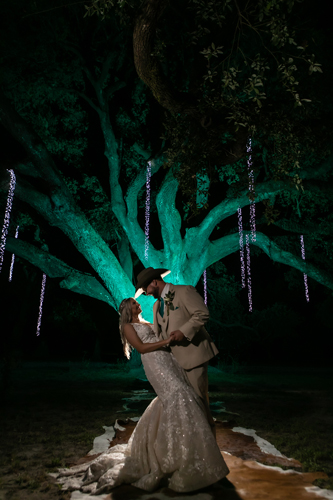 Third, the color—learn to read color! Midday outdoor light is white/clean. Sunrise or sunset light is often warm/orange. Cloudy days are often blue/cool in color. Interior spaces could even still have fluorescents that give off a green cast. If your subject is standing next to a wall, structure, object, or even on the grass, expect a color cast to show on clothing and shoes. I often add theatrical colors for bold effects. I’ll use a bride’s wedding colors and Atmosphere Aerosol at night to create a dramatic, romantic image. Bonus points if I can find water or some reflective foreground to create another layer of composition! I’ll also add colored gels to high school senior and sports photos to bring their school’s theme into the vision. Sometimes, color needs to be corrected though. Wedding venues and high school gymnasiums are usually on the warm side with their wood toned floors and seating. A custom White Balance of 4000 degrees Kelvin (sometimes lower) will help cool off the orange color cast. If you’re adding off-camera flash, remember to also gel your lights with ½ or full CTO (correct to orange) gel so that it matches what temperature you’re telling your camera body to correct.
Third, the color—learn to read color! Midday outdoor light is white/clean. Sunrise or sunset light is often warm/orange. Cloudy days are often blue/cool in color. Interior spaces could even still have fluorescents that give off a green cast. If your subject is standing next to a wall, structure, object, or even on the grass, expect a color cast to show on clothing and shoes. I often add theatrical colors for bold effects. I’ll use a bride’s wedding colors and Atmosphere Aerosol at night to create a dramatic, romantic image. Bonus points if I can find water or some reflective foreground to create another layer of composition! I’ll also add colored gels to high school senior and sports photos to bring their school’s theme into the vision. Sometimes, color needs to be corrected though. Wedding venues and high school gymnasiums are usually on the warm side with their wood toned floors and seating. A custom White Balance of 4000 degrees Kelvin (sometimes lower) will help cool off the orange color cast. If you’re adding off-camera flash, remember to also gel your lights with ½ or full CTO (correct to orange) gel so that it matches what temperature you’re telling your camera body to correct.
Fourth, the direction—what angle is the light coming in from? Overhead as in sunlight between 11am-1pm or artificial can light in the ceilings of offices/venues? Is it indirect from the side of a building or maybe even from behind, acting as a rim light source? Maybe you’re even seeing light on a background or lamps/lit street signs that would be appropriate to include in the image. Think about Las Vegas where the neon signs offer color and story telling compositions. Expose for those lights and light the model with flash.
If I have gone through the QQCD diagnosing and decided that the location is beyond help, has mixed lighting, or simply offers me nothing exciting, I’ll learn on my “drown it out” technique. I’ve done this indoors and out and it allows me to black out a scene and start fresh so that what I envision can come to life. By using ISO 100, f8, and 200th/sec as a base exposure, I can just about guarantee the space will be dark! Now I can add back and paint in what I envision, starting with the main light, adding a rim or two, maybe a background light, and possibly a fill source. My softboxes would likely have grids on them so that I can control the spill of the light and not illuminate ugly carpet or bland walls. If I’m outside on a sunny day and I really want to “hold the blue skies,” I’ll start with ISO 200, f14, and 200th/sec, knowing that I’ll need at least ¼ power (500 watt) flash to light the person.
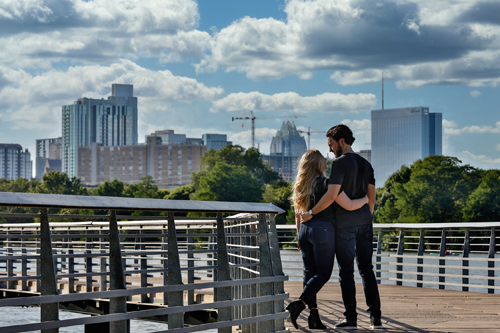
The final piece of the puzzle when creating with humans involves posing and expression. Sometimes, the location will inspire the pose. Other times, the couple’s personality or children take over. Fashion photography might take inspiration from how a certain piece of fabric moves on the model. Your clients are wanting you to step up and be a confident director, guiding them through each mini story. For example, with young families, I’ll start with the posed traditional images first before the kids are tired of me and then move into the play and motion images toward the end of the session. Walking, swinging, riding on shoulders, and incorporating lifestyle hobbies such as sports, books, trucks, music, or running through sprinklers on the lawn can be matched to the age of the child and give them something to look forward to. Most kids love showing me what they are interested in and then mom gets a current documentation of what family life is like at this stage.
With portraits of couples or engagement sessions, we go to places that are meaningful to them. For example, their college campus or hobby and lifestyle locations truly tell who they are as a couple. We incorporate pets anytime we can. Early in the wedding process, I’ll ask my couples, “What do you want your grandchildren to know about you 50 years from now?” Fun poses that match the mood and location come easily when they are at a place that is meaningful to them. Most couples expect that I’ll start with a traditional smile at the camera set of images and while I often do knock those out first, the focus is more on being in the moment together (dancing, walking, interacting, not looking at the camera).
If I know that either one of them are nervous, I’ll start with poses that allow them to look at each other or move around. It really does help the nerves! Don’t forget to compliment them and use your voice to coach the mood. Higher, excited tones show that you’re guiding them through an active or moving set of poses while softer voice levels help coach the couple into a romantic mentality. This is truly where your love of working with people should shine! Help ease their nerves by showing your excitement to be a part of their journey, complimenting their outfits, and by giving them a plan of images to show you’ve got this but are willing to be flexible.
Walk confidently into a location, diagnose the light, decide what to do with it, and consider the pose and expression to match it. Boldly create!
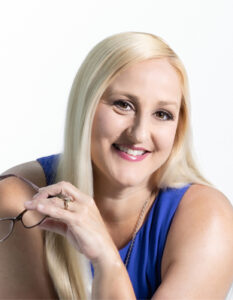 Alison Carlino photographs and educates around the world and relates very well to students both technically and personally. She is in her 19th year of business and hosts single and multi-day workshops on topics such as off-camera lighting, modern posing, team sports, high school seniors, and night sky photography. She will be teaching a class, “High School Seniors: From Portraits to Sports,” at Texas School 2023. She is a member of the speaker team and proudly sponsored by Miller’s Professional Imaging.
Alison Carlino photographs and educates around the world and relates very well to students both technically and personally. She is in her 19th year of business and hosts single and multi-day workshops on topics such as off-camera lighting, modern posing, team sports, high school seniors, and night sky photography. She will be teaching a class, “High School Seniors: From Portraits to Sports,” at Texas School 2023. She is a member of the speaker team and proudly sponsored by Miller’s Professional Imaging.



